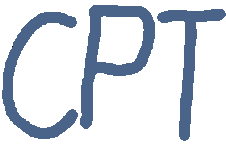
|
Calendar of Physics Talks Vienna
| When does separation of variables work? Applications to black hole spacetimes. (Vienna Theory Lunch Seminar) |
| Speaker: | Finnian Gray (Universität Wien) |
| Abstract: | Separation of variables is one of the most common ansaetze to study partial differential equations, particularly in physics. However, it is less common to ask when and why this is possible. I will discuss the geometric characterization of the separation of variables and the relation to conserved quantities due to explicit and hidden symmetries. I will then discuss how this applies to and has advanced our understanding of the physics of particles and fields in black hole spacetimes.
[[This talk is part of the "Vienna Theory Lunch Seminar", a weekly seminar aimed at both graduate and advanced undergraduate students, jointly organized by the University of Vienna and TU Wien. The focus of the seminar is on recent theoretical research done by Master students, PhDs and PostDocs. Free lunch (pizza) will be provided at the seminar. More information: https://lunch-seminar.univie.ac.at ]] |
| Date: | Tue, 24.10.2023 |
| Time: | 12:30 |
| Duration: | 75 min |
| Location: | Boltzmanngasse 5, 5th floor, Schrödinger Lecture Hall |
| Contact: | Florian Lindenbauer |
| Weyl-Ambient Metrics, Obstruction Tensors and Their Roles in Holography (Joint Theory Seminar) |
| Speaker: | Weizhen Jia (University of Illinois) |
| Abstract: | Weyl geometry is a natural extension of conformal geometry with Weyl covariance mediated by a Weyl connection. We generalize the Fefferman-Graham (FG) ambient construction for conformal manifolds to a corresponding construction for Weyl manifolds. We first introduce the Weyl-ambient metric motivated by the Weyl-Fefferman-Graham (WFG) gauge, which is a generalization of the FG gauge for asymptotically locally AdS (AlAdS) spacetimes. Then, the Weyl-ambient space as a pseudo-Riemannian geometry induces a codimension-2 Weyl geometry. Through the Weyl-ambient construction, we investigate Weyl-covariant quantities on the Weyl manifold and define Weyl-obstruction tensors. We show that Weyl-obstruction tensors appear as poles in the Fefferman-Graham expansion of the AlAdS bulk metric for even boundary dimensions. [...] |
| Date: | Tue, 24.10.2023 |
| Time: | 14:00 |
| Duration: | 60 min |
| Location: | Online (ZOOM). Link : https://tuwien.zoom.us/j/67102039242?pwd=ZHhS |
| Contact: | Adrien Fiorucci, Daniel Grumiller |
| OER on oxide and oxynitride surfaces: effect of orientation, cation leeching and dimer formation |
| Speaker: | Ulrich Aschauer (University of Salzburg, Department of Chemistry and Physics of Materials) |
| Abstract: | Development of novel photocatalyst materials does not only rely on finding materials with suitable bulk properties (band gap, carrier mobility, band edges) but also on a detailed understanding of their surface structure and chemistry under photocatalytic application conditions. For structurally or chemically complex materials, the surface structure is particularly difficult to anticipate from intuition alone. Density functional theory (DFT) calculations in combination with thermodynamic models can be used to predict surface structures under application conditions and the resulting oxygen-evolution reaction (OER) chemistry. In this talk, I will highlight case studies for structurally complex materials in the form of perovskite-derived layered oxides of the class A2B2O7 and chemically complex perovskite oxynitrides that are commonly synthesized starting from these layered materials.
|
| Date: | Tue, 24.10.2023 |
| Time: | 16:00 |
| Location: | TU Wien, Institut für Angewandte Physik, E134 1040 Wien, Wiedner HauptstraÃe 8-10 Yellow Tower âBâ, 5th floor, SEM.R. DB gelb 05 B |
| Contact: | Univ.Prof. Dr.Ulrike Diebold |
| The status of naturalness II |
| Speaker: | Gian Giudice (CERN) |
| Abstract: | Naturalness arguments have been a powerful guiding principle for
physicists as they try to construct new theories. When applied to our
current description of the microscopic world in terms of quantum field
theory, naturalness leads to the apparent paradox of the smallness of
the electroweak scale and the cosmological constant, as compared to the
Planck scale. The hypotheses on which naturalness rests, the
consequences of relaxing some of these hypotheses, and the current
attempts to develop new paradigms beyond naturalness will be discussed.
|
| Date: | Tue, 24.10.2023 |
| Time: | 16:15 |
| Duration: | 60 min |
| Location: | Fakultaet fuer Physik, Erwin Schroedinger-HS, Boltzmanngasse 5, 5. Stock |
| Contact: | A. Hoang, H. Neufeld, M. Procura |
| Quasilocal corrections to Bondi's mass loss formula and dynamical horizons |
| Speaker: | Albert Huber (Vienna) |
| Abstract: | In my talk, a null geometric approach to the quasilocal Brown-York formalism will be used to calculate, within a bounded gravitating physical system,
the flux of energy through a dynamical horizon of a non-stationary spacetime.
This is done by varying the total Hamiltonian of the system (bulk part plus boundary part) so as to derive an integral law describing the rate of change
of mass and/or radiant energy escaping through the dynamical horizon.
The results obtained in this way, as is shown, lead to previously unrecognized correction terms, including a bulk-to-boundary inflow term that leads to corrective extensions
of Einstein's quadrupole formula in the large sphere limit and to quasilocal corrections to Bondi's mass-loss formula, the latter occurring in the null geometric context. . . . . |
| Date: | Wed, 25.10.2023 |
| Time: | 14:15 |
| Duration: | 60 min |
| Location: | Vera Hoftrakt - Victor-Franz-Hess-seminar room, WaehringerstraÃe 17 |
| Contact: | P. Chrusciel, D. Fajman |
|
